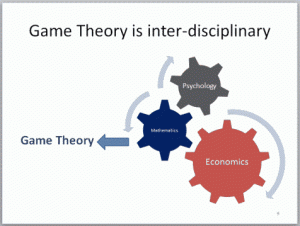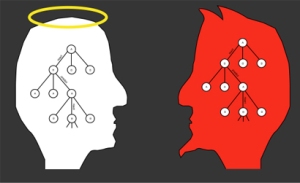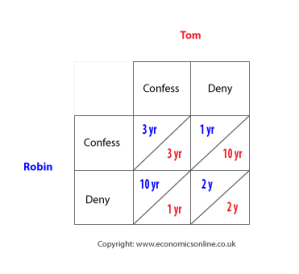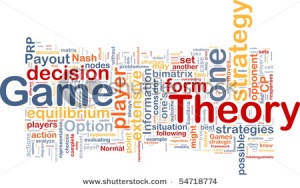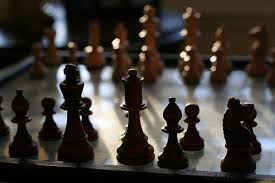- Game theory is the science of strategy. It attempts to determine mathematically and logically the actions that players should take to secure the best outcomes for themselves in a wide array of games.
- Game theory was pioneered by Princeton mathematician john von neumann followed by Oskar Morgenstern.
- Set of concepts aimed at decision making in situations of competition and conflict (as well as of cooperation and interdependence) under specified rules. Game theory employs games of strategy (such as chess) but not of chance (such as rolling a dice).
- Two-person zero-sum games (where one’s gain must mean the other’s loss) are used by military-strategists.
- Many-person (non-zero-sum games where it pays to cooperate) are used in study of economic behavior.
- Games such as prisoner’s dilemma (where two players must choose-without communicating with each other-either to cooperate or betray) are used in political theory and union (collective-bargaining) negotiations.
- What economists call game theory psychologists call the theory of social situations.
- Although game theory is relevant to parlor games such as poker or bridge, most research in game theory focuses on how groups of people interact. There are two main branches of game theory: cooperative and non cooperative game theory.
- Non cooperative game theory deals largely with how intelligent individuals interact with one another in an effort to achieve their own goals.
- In addition to game theory, economic theory has three other main branches: decision theory, general equilibrium theory and mechanism design theory. All are closely connected to game theory.
- Decision theory can be viewed as a theory of one person games, or a game of a single player against nature. The focus is on preferences and the formation of beliefs.
- General equilibrium theory can be viewed as a specialized branch of game theory that deals with trade and production, and typically with a relatively large number of individual consumers and producers.
- Mechanism design theory differs from game theory in that game theory takes the rules of the game as given, while mechanism design theory asks about the consequences of different types of rules.
Game theory analysis has direct relevance to the study of the conduct and behavior of firms in oligopolistic markets – for example the decisions that firms must take over pricing and levels of production, and also how much money to invest in research and development spending.
The Prisoner’s Dilemma
- The Prisoner’s Dilemma is a simple game which illustrates the choices facing oligopolies. As you read the scenarios, you can play the part of one of the prisoners.
The scenario
Robin and Tom are prisoners:
- They have been arrested for a petty crime, of which there is good evidence of their guilt – if found guilty they will receive a 2 year sentence.
- During the interview the police officer becomes suspicious that the two prisoners are also guilty of a serious crime, but is not sure he has any evidence.
- Robin and Tom are placed in separate rooms and cannot communicate with each other. The police officer tries to get them to confess to the serious crime by offering them some options, with possible pay-offs.
The options
- Each is told that if they both confess to the serious crime they will receive a sentence of 3 years.
- However, each is also told that if he confesses and his partner does not, then he will get a light sentence of 1 year, and his partner will get 10 years.
- They know that if they both deny the serious offence they are certain to be found guilty of the lesser offence, and will get a 2 year sentence.
The pay-off matrix
- The dilemma is that their own ‘pay-off’ is wholly dependent on the behavior of the other prisoner. To avoid the worse-case scenario (10 years), the safest option is to confess and get 3 years. If collusion is possible they can both agree to deny (and get 2 years), but there is a very strong incentive to cheat because, if one denies and the other confesses, the best outcome of all is possible – that is 1 year. Fearing that the other may cheat, the safest option is to confess.
Types of strategy
Maximax
A maximax strategy is one where the player attempts to earn the maximum possible benefit available.The best pay-off for Robin from confessing is 1 year (with Tom denying), and the best pay-off from denying is 2 years (with Tom denying) – so the best of the best is to confess (I year).
Maximin
A maximin strategy is where a player chooses the best of the worst pay-off. In the Prisoner’s Dilemma, the worst pay-off to Robin from confessing is to get 3 years (with Tom confessing), and the worst pay-off from denying is 10 years (with Tom confessing) – therefore the best of the worst is to confess.
Dominant strategy
A dominant strategy is the best outcome irrespective of what the other player chooses, in this case it is for each player to confess – both the optimistic maximax and pessimistic maximin lead to the same decision being taken.
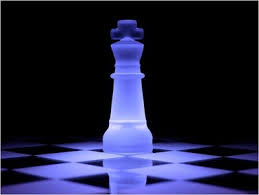 References: economicsonline ; levine ;
References: economicsonline ; levine ;
